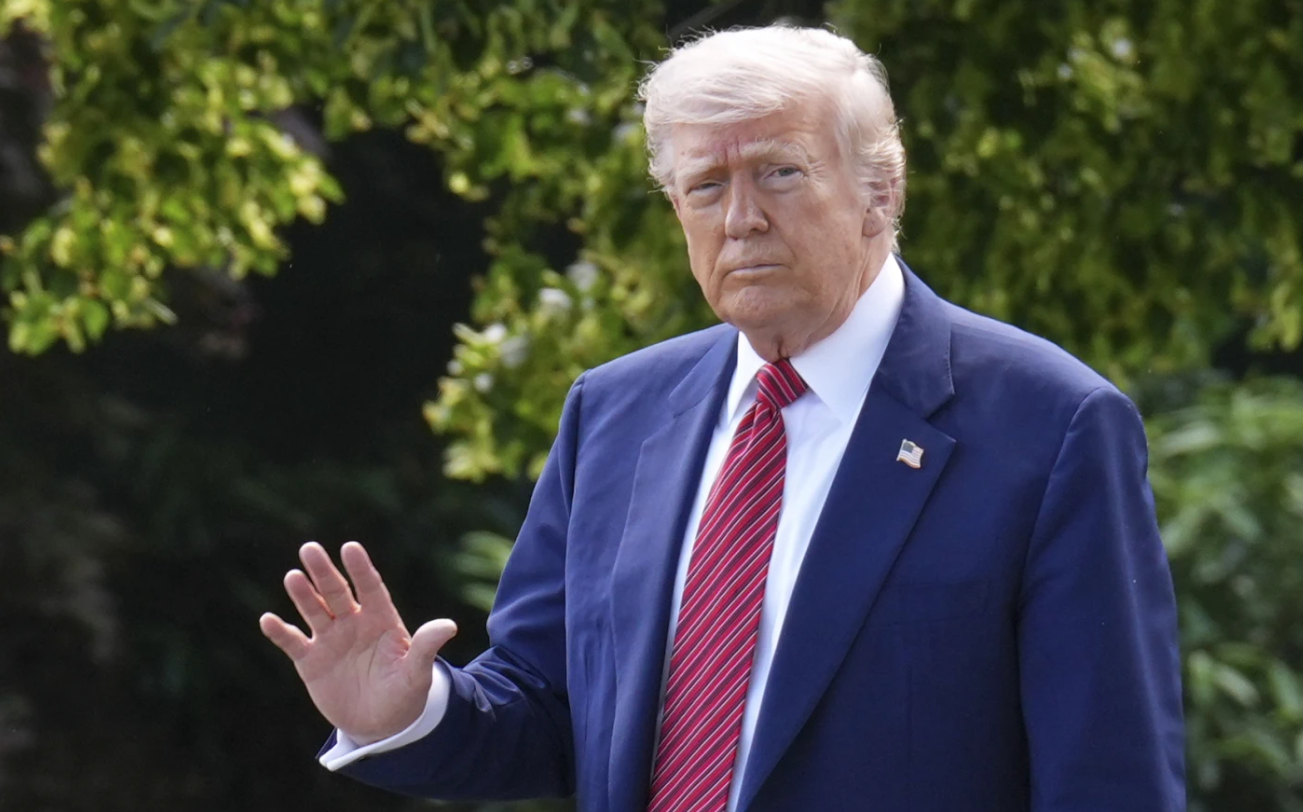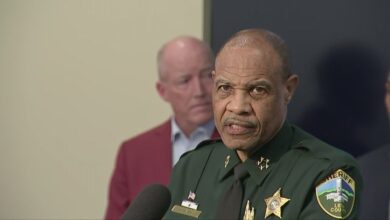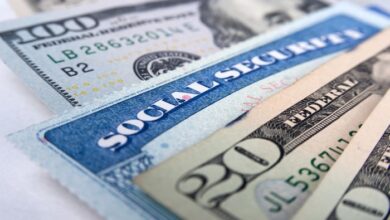Federal Court Halts Ruling Against Trump’s Tariffs—for Now
A federal appeals court has temporarily reinstated Donald Trump’s tariffs, just one day after a lower court blocked them.

WASHINGTON, DC. (WE) — A federal appeals court has temporarily reinstated tariffs imposed by President Donald Trump, reversing a lower court decision that struck them down just a day earlier. The move marks a significant step in an ongoing legal fight over the president’s power to impose trade barriers under the banner of national security.
The United States Court of Appeals for the Federal Circuit in Washington, D.C. issued the emergency order on Thursday. It granted the Trump administration a temporary reprieve after the U.S. Court of International Trade ruled that the tariffs had circumvented Congress. The appeals court did not provide a written explanation for the stay but gave the plaintiffs until June 5 to file a response.
The administration had requested the stay, arguing that removing the tariffs could damage U.S. national security. The White House praised the ruling.
“You can assume, even if we lose tariff cases, we will find another way,” said Peter Navarro, Trump’s former trade adviser.
The lower court’s ruling had jeopardized tariffs imposed on a range of goods. These included imports from Canada, Mexico, and China. Trump had justified the tariffs by accusing these nations of aiding the flow of fentanyl into the U.S.
The U.S. Court of International Trade argued that Trump had used the International Emergency Economic Powers Act (IEEPA), a 1977 law intended for specific emergency actions, in ways that exceeded its scope. The IEEPA is traditionally reserved for limited sanctions. It has been used in the past to seize assets from the Iranian government during the 1979 hostage crisis and to target drug cartels in Colombia.
Legal experts criticized Trump’s use of the law to justify sweeping tariffs.
“The 1977 International Emergency Economic Powers Act doesn’t say anything at all about tariffs,” said Bruce Fein, a former U.S. associate deputy attorney general under President Ronald Reagan.
Fein pointed out that if Trump had wanted to impose tariffs for national security reasons, he could have used the Trade Expansion Act of 1962. That statute allows tariff action following a study by the Department of Commerce. However, it requires the action to focus on individual products, not entire countries.
“This isn’t about whether the president can impose tariffs,” Fein said. “He can—but under the right legal framework. The 1962 act requires a study, and the action must be product-by-product, not blanket coverage by country.”
Wednesday’s ruling by the trade court caused alarm among administration officials. It threatened to unravel key components of Trump’s trade policy, particularly the so-called “Liberation Day” tariffs that targeted allies and adversaries alike.
Critics have long argued that the tariffs lacked a proper foundation in law and hurt American consumers. Business groups have also voiced concern that the unpredictability of Trump’s tariff strategy damaged the global reputation of the United States.
Read More:
- Judge Extends Block on Trump’s Harvard Student Ban
- Supreme Court Allows Trump to Implement Transgender Military Ban
- Mike Waltz to Exit White House Amid Signal Chat Fallout
The trade court’s decision stated that the IEEPA did not authorize the president to unilaterally rewrite the U.S. tariff code. It emphasized that only Congress holds the power to set tariff levels.
“The power to decide the level of tariffs resides with Congress,” said Greg Shaffer, an international law professor at Georgetown Law. “The IEEPA doesn’t even mention raising tariffs. It was passed to narrow the president’s authority, not expand it.”
Shaffer added that using the IEEPA to impose broad tariffs amounts to a reinterpretation of the statute. “Now the president is using it to rewrite the tariff schedule for the whole world,” he said.
Peter Harrell, a fellow at the Carnegie Endowment for International Peace, reacted to the court’s ruling on X (formerly Twitter). He wrote that if the ruling stands, importers could eventually seek refunds on the tariffs paid under the IEEPA. However, he cautioned that the government would likely delay those refunds until the appeal process ends.
The Court of International Trade did not weigh in on tariffs enacted under other laws. For example, Trump’s tariffs on steel, aluminum, and automobiles relied on the 1962 Trade Expansion Act. Those levies remain untouched for now.
Nevertheless, the case underscores the broader legal tension over presidential power in trade policy. Trump often used executive authority to sidestep legislative input, a pattern that critics say erodes checks and balances.
In April, the U.S. Department of Commerce launched a probe into the nation’s dependence on Chinese-made pharmaceutical ingredients. Officials framed the issue as a national security concern, opening the door to new tariffs under existing statutes. That investigation could result in narrow product-specific tariffs on drugs and chemical components used in American manufacturing.
Trade experts say these kinds of targeted actions are more likely to withstand legal scrutiny. Still, the broader question remains whether a president can bypass Congress to implement sweeping trade barriers.
Fein emphasized that while the president has some authority to act in emergencies, that power is limited. “He can do so under the 1962 act,” he said, “but only after following the law’s process. If he doesn’t like that, he can ask Congress to amend the statute.”
For now, the federal appeals court’s temporary stay allows the Trump-era tariffs to continue. However, legal analysts expect a drawn-out battle over the scope of executive power.
The IEEPA, passed in the wake of the Watergate scandal, was designed to curtail presidential overreach. Lawmakers wanted a tool to respond to foreign threats and emergencies—not a blank check for economic policy.
Yet since its enactment, presidents from both parties have tested its limits. The law has allowed the U.S. to freeze foreign assets, sanction terrorist organizations, and crack down on money laundering. But using it to impose tariffs on allies is a novel interpretation.
Under Trump, the IEEPA became a central weapon in his trade arsenal. His administration used the law to justify tariffs on nearly $400 billion in imported goods. Critics say the costs were passed on to consumers, contributing to inflationary pressure and harming small businesses.
At the same time, Trump’s supporters argued the tariffs helped rebalance trade and protected U.S. manufacturing jobs. They saw his hardline approach as a necessary correction to years of trade imbalances.
The Biden administration has walked a tightrope, keeping some of Trump’s tariffs in place while reviewing their legality and effectiveness. President Joe Biden has prioritized multilateral trade talks and sought to rebuild alliances, but he has also maintained tough stances on China.
The court’s decision could complicate that balance. If the appeals court ultimately upholds the lower court’s ruling, it could open the floodgates for legal challenges to other Trump-era trade measures. It may also prompt Congress to revisit the IEEPA or consider new trade legislation that limits unilateral executive actions.
Until then, importers and exporters face uncertainty. Tariffs influence supply chains, pricing, and long-term planning. Reversals like this one create instability for businesses trying to navigate global markets.
Lawmakers have taken notice. Some members of Congress have called for stricter oversight of executive trade powers. Others argue that in a rapidly evolving global landscape, the president needs the flexibility to act fast.
Legal scholars say the coming months will be critical. Courts will need to decide whether Trump’s use of the IEEPA aligns with the Constitution and the intent of Congress. The case could set a precedent for future presidents—and for the future of American trade policy.
For now, the Trump-era tariffs remain in place. But with legal challenges mounting and economic consequences still unfolding, the final verdict on presidential tariff power remains far from settled.















